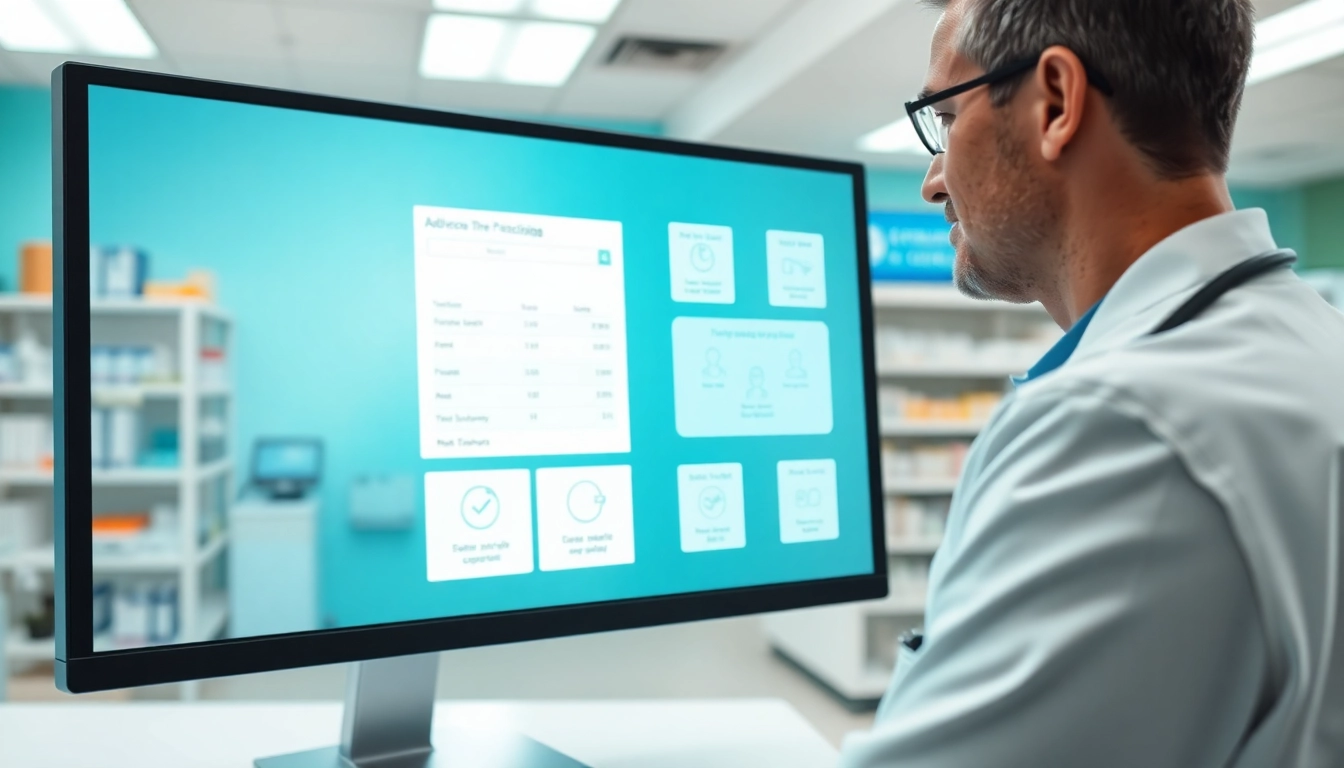Understanding E-Prescribing Software
Definition and Importance of E-Prescribing
E-prescribing, or electronic prescribing, is the process of electronically sending prescriptions from healthcare providers directly to pharmacies. This method enhances the traditional approach, which relied on handwritten prescriptions, by promoting accuracy, efficiency, and clarity. At its core, e-prescribing minimizes the risks associated with human error, such as illegible handwriting or transcription errors. The features of eprescribing software play a critical role in ensuring that patients receive their medications promptly and as prescribed, thus increasing overall patient safety and satisfaction.
Historical Context and Development
The evolution of e-prescribing began in the late 1990s, driven by the healthcare industry’s need to reduce medication errors and enhance prescription accuracy. Early systems primarily focused on digitizing the prescription process, but advancements in technology have since expanded these capabilities significantly. Initially viewed with skepticism, e-prescribing gained traction following the mandate of the Medicare Modernization Act in 2003, which encouraged the use of electronic prescriptions to improve healthcare outcomes. Today, the software encompasses a wide range of functionalities that facilitate seamless communication between healthcare providers, pharmacists, and patients.
Core Features of E-Prescribing Software
The core features of e-prescribing software are designed to enhance various aspects of the prescribing process. These features not only streamline workflows but also contribute to better patient care through efficient medication management. A few of these core features include the ability to perform medication history checks, manage patient profiles, and utilize decision support tools to prevent adverse drug interactions.
Essential Features of E-Prescribing Software
User Dashboards and Interfaces
One of the most user-centric aspects of e-prescribing software is the design of user dashboards and interfaces. An intuitive dashboard allows healthcare providers to easily navigate the software, quickly access patient information, and manage prescriptions effortlessly. Good design also facilitates quick training, enabling both seasoned professionals and new users to adapt to the technology without extensive learning curves. A well-organized interface contributes to faster prescription processing and better user satisfaction.
Real-time Drug Interaction Alerts
Drug interaction alerts are a critical feature of e-prescribing software. These alerts are automatically generated when a prescribed medication is likely to interact negatively with another medication the patient is currently taking or with any allergies they may have. This real-time decision support helps prevent adverse drug events (ADEs) and enhances patient safety, making it an essential tool for healthcare providers. With access to comprehensive drug databases, clinicians can quickly make informed decisions regarding patient treatment plans.
Electronic Transmission and Submission Processes
Electronic transmission eliminates the need for physical prescriptions, enabling healthcare providers to send prescriptions directly to pharmacies with a single click. This process not only reduces the chances of transcription errors but also speeds up the medication fulfillment process, allowing patients to receive their prescriptions more quickly. Moreover, integrated systems often allow for real-time updates on the status of prescriptions, providing valuable insights for both providers and pharmacies.
Benefits of Implementing E-Prescribing Software
Increased Patient Safety and Accuracy
One of the most significant advantages of e-prescribing software is the enhancement of patient safety. By reducing human error associated with handwritten prescriptions, this technology helps ensure that medications are dispensed correctly. Features such as automated alerts for potential drug interactions and allergies further bolster safety protocols, enabling healthcare providers to deliver higher quality care while minimizing risks to patients.
Improved Workflow for Healthcare Providers
Implementing e-prescribing software can drastically improve the workflow for healthcare providers. By automating routine tasks, such as prescription renewals and refill requests, less time is spent on administrative work, which allows clinicians to focus more on patient care. Moreover, data from e-prescribing systems can be integrated with electronic health records (EHR), contributing to a more cohesive healthcare delivery model where all aspects of a patient’s health are easily accessible and managed.
Enhanced Communication with Pharmacies
E-prescribing software facilitates enhanced communication between healthcare providers and pharmacies. With direct electronic transmission of prescriptions, misunderstandings related to dosage or medication can be minimized. Additionally, this communication provides pharmacists with immediate access to patient medication histories, enabling them to perform thorough checks before dispensing medication. This collaborative approach fosters a more integrated healthcare experience for patients.
Challenges in E-Prescribing Software Adoption
Training and Usability Issues
Despite the numerous benefits, some healthcare providers face challenges during the adoption of e-prescribing software. Training staff to effectively use the system can be time-consuming and may initially disrupt workflow. It’s critical for organizations to invest in comprehensive training programs that not only teach the technical aspects but also demonstrate the software’s benefits in improving patient care and workflow efficiency. Ongoing support and refreshers can help ease these transitions and maintain staff proficiency.
Integration with Existing Systems
Another considerable challenge is integrating e-prescribing software with existing electronic health record systems. Incompatibility can lead to fragmented workflows and hinder the potential efficiencies that e-prescribing aims to provide. Choosing a solution that offers robust interoperability features is essential for seamless integration. Healthcare organizations should plan for adequate technical resources and support during and after the integration process to address any arising issues swiftly.
Regulatory Compliance Challenges
Compliance with regulatory standards remains a significant concern for adopting e-prescribing systems. The ever-changing landscape of healthcare regulations necessitates that software providers stay updated and ensure that their solutions meet these requirements. Organizations must remain proactive in understanding these regulations and ensure that their e-prescribing practices are compliant with both state and federal laws, especially concerning controlled substances.
The Future of E-Prescribing Software
Technological Advancements and Trends
The future of e-prescribing software is poised for exciting advancements. Emerging technologies such as artificial intelligence (AI) and machine learning (ML) are being leveraged to provide even more sophisticated decision support tools. These advancements promise to enhance predictive analytics capabilities, allowing for improved risk assessment and tailored treatment options for individual patients, ultimately improving health outcomes.
Potential Impact on Healthcare Efficiency
E-prescribing software will continue to play a vital role in improving overall healthcare efficiency. By streamlining the prescription process, future systems are likely to incorporate features that enhance real-time decision-making, reduce wait times, and optimize pharmacy operations. As e-prescribing becomes more prevalent, its integration into broader healthcare workflows will further solidify its impact on patient care.
Patient Privacy and Data Security Considerations
As technology advances, so do the concerns regarding patient privacy and data security. E-prescribing software must adhere to stringent regulations concerning the handling of sensitive patient information. Future systems will likely incorporate advanced security measures, such as blockchain technology, to enhance data integrity and confidentiality. Maintaining robust security protocols will be essential in building trust and ensuring the widespread adoption of e-prescribing solutions.



